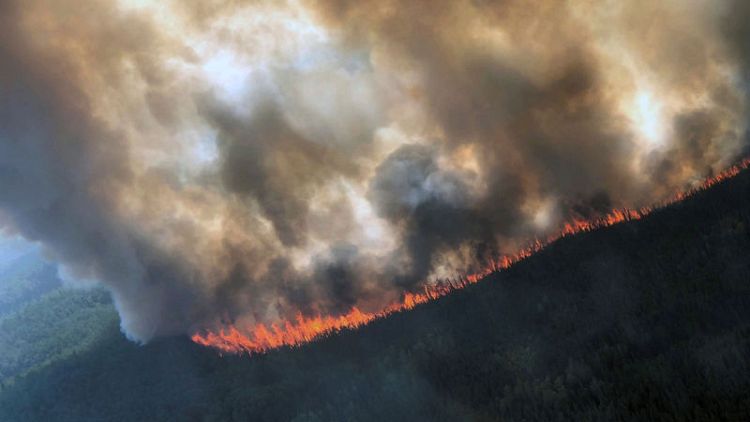By Yereth Rosen
ANCHORAGE (Reuters) - Late-season wildfires during one of the driest summers on record in Anchorage have destroyed homes, forced evacuations, closed roads and schools and poured sometimes-dangerous levels of smoke into the state’s most populous region.
About 80 miles north of Anchorage, the 3,000-acre McKinley Fire was burning on both sides of the Parks Highway. That blaze had destroyed more than 50 structures as of Sunday night and residents of the area, which lies between Wasilla and Talkeetna, were under evacuation orders, fire officials said.
Some schools in the fire area were closed, local officials said, and thousands of other residents were facing possible evacuation orders.
Anchorage is currently classified as being in a “severe” drought, according to the National Integrated Drought Information System, a first for the city.
“The fuels are dry,” said Rick Thoman, climate specialist with the Alaska Climate Assessment and Policy Center. “With the ground being dry, the low-level humidity is lower. It’s the perfect combination.”
Smoky wildfires have been a near-constant in Anchorage this summer, which so far has been the hottest on record and, for many areas, the driest on record.
As of Monday, Alaska had 659 wildfires for the year that burned about 2.5 million acres, making 2019 among the biggest fire seasons on record for the state, according to fire managers.
Alaska fire officials are being aided by firefighting teams from the Lower 48 states and Canada.
The McKinley and other new or rekindled fires are burning at a time of year when blazes are usually winding down and when late-summer rains normally drench the landscape, said Tim Mowry, a spokesman for the Alaska Division of Forestry. “It’s not raining, unfortunately.”
On the Kenai Peninsula south of Anchorage, the Swan Lake Fire that had simmered down after burning during much of June and July roared back to life in the past few days.
The fire, estimated at 138,479 acres on Monday, spewed particulate pollution that is currently among the worst in the world, according to the monitoring site Purple Air.
Air quality conditions in the tourist community nearest to the fire, Cooper Landing, and along nearby Kenai Lake were classified as hazardous, with emergency conditions in place for everyone.
(Reporting by Yereth Rosen in Alaska; Editing by Dan Whitcomb in Los Angeles and Dan Grebler)
